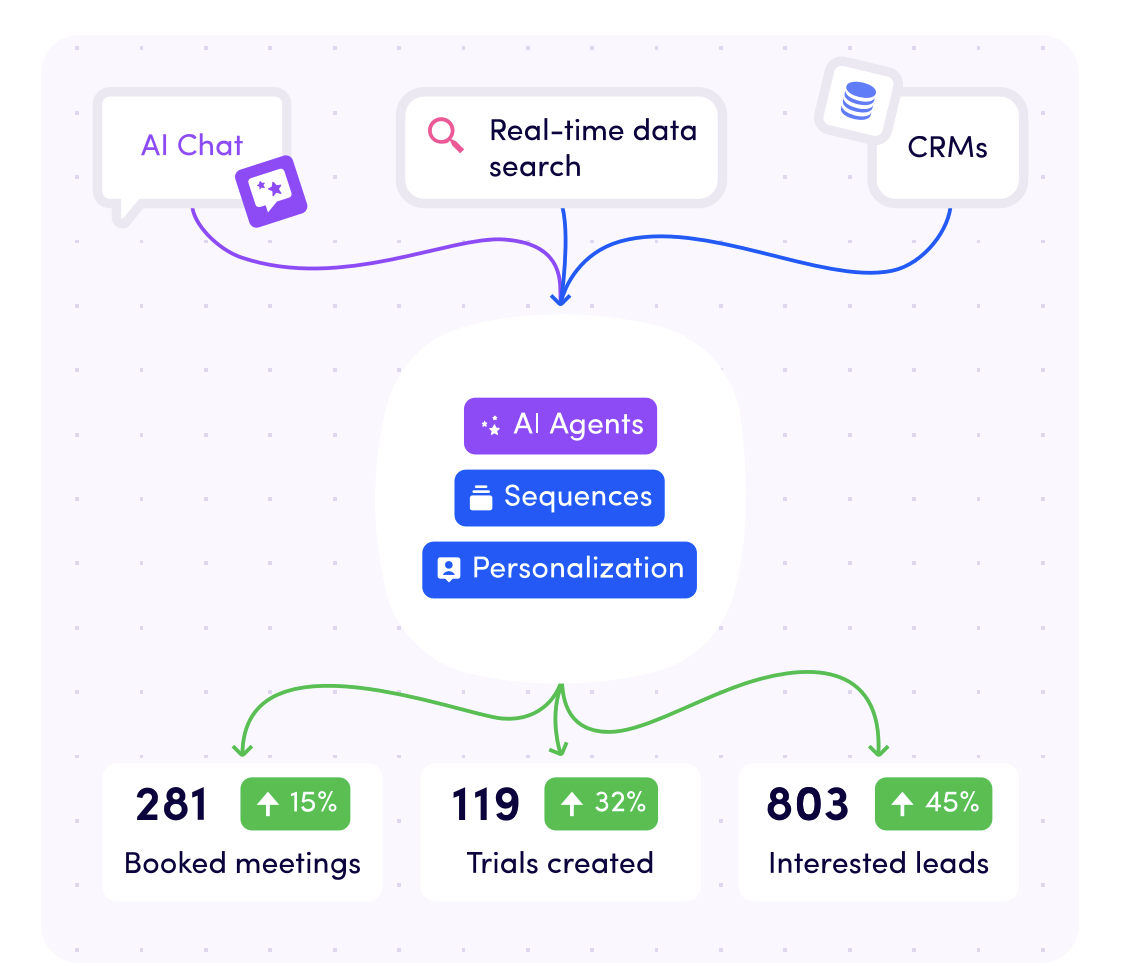Your Ultimate Guide To Data-Driven Marketing For Unstoppable Growth

*Updated on August 1, 2024
Ever stepped into a plane and seen the pilot wearing a blindfold? I guess not. The reason is that a pilot needs information from a myriad of whistles and bells in the cockpit.
Everything from airspeed to altitude to heading.
Not a single decision is made without consulting the data presented by those dials.
There is no room for error.
What’s happening with traditional marketing is that it’s like wearing a blindfold. Sometimes.
The reason is that most traditional marketing relies on research that blankets a wide area of needs and wants and is rife with failed experiments.
When you’re taking up a data-driven approach, you’re focusing on the moment.
What does your ideal target group want right now and in the near future?
Through segmentation, personalising the customer experience, and improving strategies in real-time, a data-driven approach is the modern marketing way to sell more and build better customer relationships.
Want to know how this works?
Read on.
JUMP TO SECTION
1. What is data-driven anyway, just a fancy word?
2. How do you become data-driven?
3. Benefits of working with a data-driven approach
4. Grab that pickaxe and start mining
6. Become certified in Data Fundamentals!
What does it mean to be data-driven?
Let’s start at the beginning, with a dictionary definition of data-driven.
According to the Cambridge Dictionary, data-driven stands for “happening or done according to information that has been collected”.
This is already very close to what we want to achieve in our marketing strategy.
With a data-driven marketing approach, you dive into customer data like a child at a ball pit and predict your customer’s needs, desires, and future actions.
This means:
- Personalising the customer journey from A to Z
- Targeting the right segments
- Predicting the future like a soothsayer
- Fine-tuning your marketing strategies without experimenting
You’ll notice that data-driven is a common word found with copywriters.
Just scroll through your LinkedIn feed for a second and you’ll notice a lot of headlines saying things like “Copywriting with data-driven success” or “Data-driven copy to get the leads you need” or “Data-driven rockstar with glitter and glamour as ink for my pen”.
Well, maybe not that last one, but you catch my drift.
Marketing is all about knowing when and what to produce.
Things move so fast that you might end up cancelling a long-term campaign because it’s no longer wanted by the time it’s finished.
Working with a data-driven strategy essentially eliminates those painful meetings where your manager operates on “I think…” or “What did we do in 1986?” statements.
You’ll instead be armed with a bundle of data ready to support each argument you’re making for a bulletproof marketing strategy.
Don’t believe me? Check out some stats here:
“2 out of 3 of leading marketers admit that data-based decisions beat gut instinct” - Econsultancy
“79% of customers won’t consider an offer unless a brand personalised it to their previous interactions” - Marketo
“74% of consumers feel annoyed when seeing ads they find irrelevant from brands” - Adverity
Marketers really can’t live without working using a data-driven approach these days.
The big difference with traditional marketing is that with data-driven marketing, you don't rely on outdated studies or assumptions.
This leads to a lot of A/B testing with recurring failures that your team has to endure.
Data-driven marketing allows you to connect with your ideal target group at the right time, with an offering that matches their exact wants and needs, often by analysing searches and search trends.
How do you become data-driven?
The way to become a data-driven marketer is by asking your target group different questions.
In her book ‘Finding the Right Message’, Jennifer Havice talks about how you turn your customer research into effective messaging.
The most important part of thinking in a data-driven way is by asking your target group what their struggles are.
The most important part of thinking in a data-driven way is asking your target group what their struggles are.
As Havice says, your customer is taking a journey from struggle to success.
It’s your job to uncover what problems and obstacles are part of this journey and address and solve them.
Below we’ve listed the steps as recommended by Havice to ensure you retrieve the right data collection for your next marketing campaign.
- Uncover the struggle
By talking to your customers, you will find out the pain points they experience. Your product or service needs to solve, or at the very least alleviate, some of this pain.
Let’s say you have a website that’s horrible to look at, something straight from a horror movie for IT specialists.
The pain point is not having an ugly website, it is about making a dreadful first impression.
- Implement a fix
Now that you’re up-to-date with your target group’s pain points, you’ll need to present a fix to these struggles.
With a data-driven approach like this, you might even scare yourself with the fact that what you’ve been doing all these years is completely wrong.
That’s good! Now we’re getting somewhere.
- Remove hesitations
Bounce rates. You’ve probably heard about them.
SEO experts love to mention this to businesses.
When you’re operating without a data-driven marketing strategy, you’ll encounter higher bounce rates on your websites.
This is because you haven’t uncovered what the hesitations are.
Maybe your website is painstakingly slow, or the website copy simply doesn’t match your ideal target group.
Delve into this and research the data.
- Analyse the awareness level
Are your customers aware of your brand? Are they even aware of the problem or the solution presented to them?
Make sure what stage your ideal customer is in before you throw money at expensive campaigns.
- Be different
Every brand out there tries to grab attention, a millisecond of our busy minds, just to convince them to buy. With about 213 million businesses in the world, you need to do something different to stand out.
Now, when your competitor chooses red, you don’t necessarily have to go blue.
Just be the best red you’ve ever seen.
Go burgundy or ruby. Anything. Stand out. Be different. But be yourself.
- Enjoy success
Use the reviews and testimonials received from individual customers who make purchases.
Be mindful to use your data appropriately. Less than 2% of businesses are actually doing this right, according to Forbes.
Don’t sit on a stack of data and let the customer pass you by. Use it!
One of the best ways to gather genuine responses from your target group is to avoid focus groups and instead focus on interviews and surveys.
Don’t let groupthink cloud the real data.
Besides, any of us who willingly attend a focus group in a damp room with terrible coffee must be some kind of special person who is not the common denominator you are looking for.
Benefits of working with a data-driven approach
A data-driven marketing strategy is a rigorous approach which takes commitment and time.
Everybody on the team needs to share this mindset for it to work.
It might be easy to craft a campaign on a Tuesday morning fueled by assumptions, but the wasted time is a bigger loss of capital than aiming for the bullseye from the start.
Let’s check out the benefits of this data-driven approach.
- You generate reliable results
The data you gather through the process mentioned above is invaluable for future marketing efforts.
You gain a deeper knowledge of your target group and build up a stronger bond with them along the way.
- You become familiar with habits through real-time insight
Just think about all the data you can gather with tools such as Google Analytics and Heatmaps.
You’ll see exactly where your visitors look at first and which pages they bounce away from.
Follow their journey through the data stream and fix the obstacles and hesitations that arise.
- You can inform your team
Besides using the data for yourself, you now also have the data to present in beautiful, understandable graphs and infographics.
This will help you convince your team, your manager, or your boss to go with your idea. When everyone agrees, the chances that your campaign hits its mark are just that much easier.
Grab that pickaxe and start mining
Why are you still reading this? Go out there, set up your surveys and interviews, and start collecting that tasty data.
The sooner you do that, the sooner you can begin mapping out the perfect customer journey for your clients.
If you need to kick-start your data-generating efforts, we can recommend checking out this overview that the Lotame team created.
If you’re a startup, don’t start with social media campaigns yet.
Your channels will prove insufficient to gather large enough samples.
Instead, Google your competitors and go through reviews and actionable insights.
Look for what people like and dislike about their products or services. Use that data to shape your own marketing approach.
Ready? Set? Go!
P.S. Are you intrigued by the importance of a data-driven strategy, but don't know how to get started just yet?
Become Certified in Data Fundamentals!
Help drive business strategy as a key decision-maker through data-driven insights that define real action.
Our comprehensive Data Fundamentals course will equip you with the skills and strategies needed to improve your performance and future-proof your career.
7 modules | 75 lessons | 7 tests | 7 exercises
- Module 1: Data literacy
- Module 2 - Analytics
- Module 3 - Experimentation
- Module 4 - Advanced analytics
- Module 5 - Data visualisation
-
Module 6 - The skills of data teams
-
Module 7 - Data Projects
Learning with Growth Tribe couldn’t be easier. All of our courses are designed to be flexible for the learner with self-paced content so you can manage your time and learning to suit your lifestyle best.
Join a community of over 35,000 certified alumni who share a passion for growing their skills and positively impacting their careers.
FAQs
1. What is data-driven marketing and why is it important?
Data-driven marketing refers to the practice of making marketing decisions based on data analysis and insights, rather than relying solely on intuition or assumptions. This involves collecting and analysing data from various sources, such as customer behaviour, demographics, and preferences, to better understand the target audience and optimise marketing activities.
It is important because it allows companies to understand their target audience, optimise their marketing efforts, and improve their return on investment (ROI).
2. How do marketing teams utilise different marketing channels in a data-driven strategy?
Marketing teams use data to identify the most effective marketing channels for reaching their target audience. This includes analysing user behaviour across social media, email marketing, content marketing, and other digital platforms.
By monitoring key metrics such as engagement rates and click-through rates, teams can allocate resources to the channels that yield the best results, thus optimising their overall digital marketing strategy.
3. What role does real-time data play in executing effective marketing campaigns?
Real-time data is crucial for making timely and informed marketing decisions. It allows marketers to adjust campaigns on the fly based on current customer behaviour, trends, and external factors.
For example, if a specific advertisement isn't performing well, real-time analytics can prompt immediate changes to the messaging, targeting, or budget allocation. This agility helps in maintaining high engagement rates and maximising conversion opportunities.
4. What is an example of a data-driven strategy?
An example of a data-driven strategy is an e-commerce company using customer data to optimise its product offerings. By analysing data on customer purchase history and behaviour, the company can identify patterns and trends in customer preferences.
This information helps the company make informed decisions about which products to stock, promote, or discontinue, thereby better-allocating resources and driving growth and revenue.
5. How do businesses leverage third-party data in their marketing strategies?
Third-party data provides additional insights into customer demographics, behaviours, and preferences that may not be available through first-party data alone. Businesses use this information to enhance customer segmentation, improve audience targeting, and deliver more relevant messaging. However, it's essential to handle third-party data responsibly, respecting privacy laws and ethical considerations.
6. What are the key metrics to track in data-driven advertising?
In data-driven advertising, key metrics include conversion rate, click-through rate, customer acquisition cost, and ROI. These metrics help marketers assess the effectiveness of their campaigns, understand customer behaviour, and refine their strategies. Monitoring these metrics across different marketing channels enables continuous optimisation and better allocation of advertising budgets.
7. How can analytics tools help in understanding customer behaviour and improving future campaigns?
Analytics tools, often enhanced by artificial intelligence, collect and analyse data from various customer touchpoints, providing insights into user behaviour, preferences, and interactions. By leveraging AI, these tools can identify complex patterns in the data, allowing marketers to predict future behaviours, personalise customer experiences, and refine their content strategy.
Additionally, publishing these findings in a blog post can share insights with a wider audience, enhancing transparency and positioning the brand as a thought leader.
Categories
- Business & Innovation (83)
- Growth & Marketing (72)
- Artificial Intelligence (52)
- Data & Analytics (16)
- Case studies (10)
- Project Management (10)
Related articles
Latest articles
ChatGPT Search Unveiled: Should You Make The Switch Now?
Picture this: You’re no longer just “searching” the web—you’re...
Shadow AI Explained: How to Harness Hidden AI Without the Risks
Picture this: your team is under pressure to deliver results—fast....
The 33 best AI tools for commercial teams
The tools are split into 2 categories The best AI tools for your...
B2B Growth Blueprint: How to Drive Sales and Build Strong Partnerships
In today’s fast-paced world, B2B companies are like ships...
















